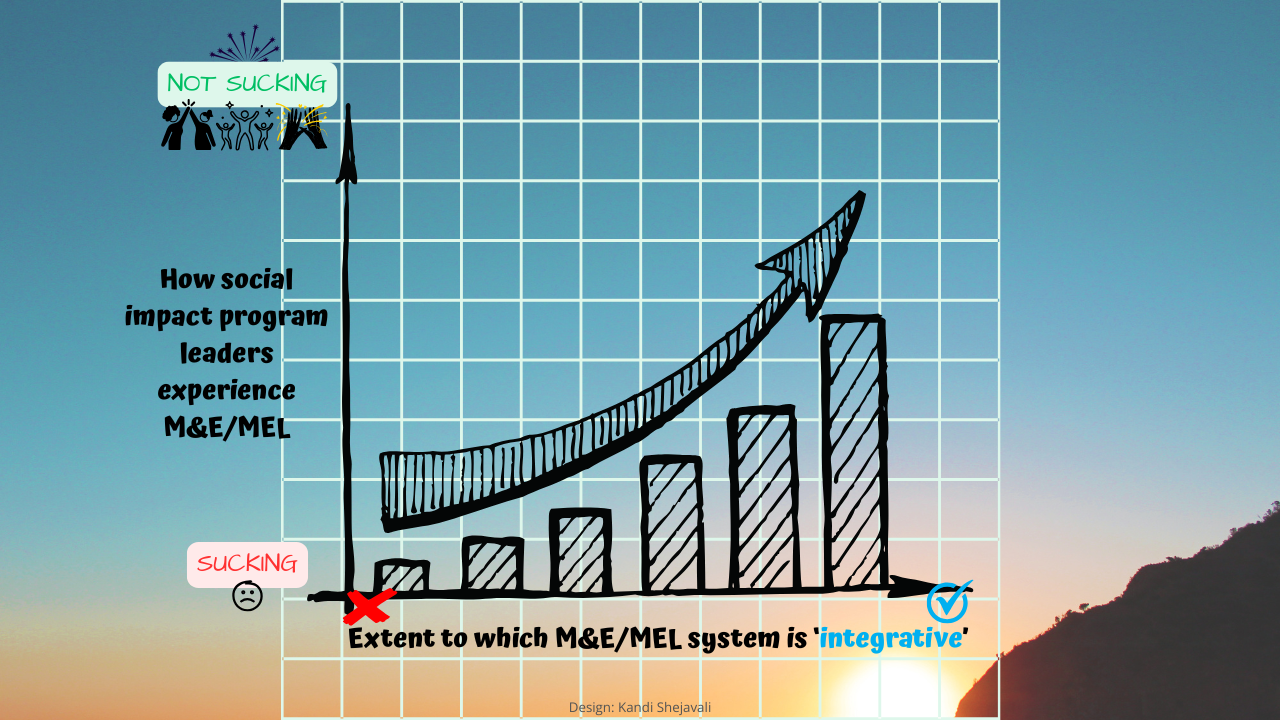Don’t confuse results statements for indicators!
May 23, 2022
Why it’s worth taking the time to develop well-formulated indicators
Indicators are an important feature in the monitoring and evaluation (M&E) systems of most, if not all, initiatives.
For good reason. If well formulated, indicators can be viewed as key navigation tools to provide insight on whether the initiative (or project/program/policy) is on track, to assess whether targets are being met, to retain focus on intended results, to hold implementers accountable, to capture contextual changes, and to support learning.
The problem is: indicators are not always well formulated.
This not only detracts from their usefulness – potentially even resulting in related data being of such poor quality that they are unusable – but can also weaken the credibility of the project, undermine communication efforts, and even limit the project’s potential to (co-)create significant positive impact. (I don’t know about you, but that’s enough to convince me that it’s worth taking the time to formulate indicators well.)
The ‘indicator’ that, well, wasn’t: results statements masquerading as indicators
One of the most common indicator formulation errors I see when reviewing project indicators is that they are presented as results statements rather than indicators.
Okay, wait, so, “what is a results statement?”, you might be asking.
Results statements, sometimes called outcome statements, describe specific changes expected to occur as a result of the project. They could be changes in the knowledge, attitudes, skills, and behaviors of people served by the project, changes in the ecosystems in which the project operate, or changes in the broader conditions of the inhabitants in the project’s geographic zone.
For example:
- if a project is involved in training police officers on how to identify human trafficking and take appropriate action, a related statement of results to be achieved by the end of a specified period might be the ‘improved capacity of police officers in [name of the project area] to identify human trafficking’; or
- if a project is aimed at providing local fishermen with access to real-time market prices via an app, a related results statement to be realized within a defined time period might be ‘expanded access for fishermen in [name of the geographic zone that the project covers] to real-time fish market prices’.
But all too often, these perfectly legitimate results statements are presented as indicators.
In other words, drawing from our above example outcome statements:
- the project involved in training police officers on how to identify human trafficking and take appropriate action will present ‘improved capacity of police officers in [name of the project area] to identify human trafficking’ as an indicator; and
- the project aimed at providing local fishermen with access to real-time market prices via an app will include ‘expanded access for fishermen in [name of the geographic zone that the project covers] to real-time fish market prices’ as an indicator.
And sorry (but not sorry), those are not indicators.
The key difference between results statements and indicators – and quick fixes to get things right
Now if you’re looking at your project’s ‘indicators’ with mounting dismay as you suspect that they are actually results statements and not indicators, worry not! Below I highlight one of the key differences between results statements and indicators that should help you distinguish between the two as well as some quick fixes you can apply to get things right.
The dead giveaway: results statements reflect a desired state whereas indicators are ‘neutral’
The most obvious sign that an ‘indicator’ in your project’s M&E system might actually be a results statement is that it describes a desired state.
Does it contain words like ‘improved’, ‘enhanced’, ‘expanded’, and the like?
Ha! Dead giveaways of a result statements.
Well-formulated indicators are ‘neutral’ in the sense that they do not reflect preferences. That’s right, they do not describe a desired state, nor do they designate directionality towards or away from any particular state. Indicators simply describe what is being/to be measured.
Examples of results statements versus indicators
Let’s use the example projects mentioned earlier to help illustrate the key difference between results statement and related indicators:
- For the project involved in training police officers on how to identify human trafficking and take appropriate action –
- results statement: ‘improved capacity of police officers in [name of the project area] to identify human trafficking’ (see the dead giveaway in the word ‘improved’?)
- potential related indicator: ‘percentage of the police officers in [name of the project area] with improved capacity to identify human trafficking’
- For the project aimed at providing local fisherman with access to real-time market prices via an app –
- results statement: ‘expanded access for fishermen in [name of the geographic zone that the project covers] to real-time fish market prices’ (see the word ‘expanded’? ’nuff said)
- potential related indicator: ‘proportion of fishermen in [name of the geographic zone that the project covers] with access to real-time fish market prices’
Quick fixes to transform results statements masquerading as indicators into real indicators
Here are two quick tips to ensure that the indicators in your project’s M&E system are well-formulated:
- PRACTICAL TIP #1: Eliminate expressed preferences: ensure that your indicators are ‘neutral’ by removing words that express a desired state (hint: words like ‘improved’, ‘enhanced’, and ‘expanded’ are often dead giveaways of results statements masquerading as indicators).
- PRACTICAL TIP #2: Fully document your project’s indicators: fully documenting your indicators is one of the most straightforward ways to make them SMART and to maximize the potential that related data will be of high quality and thus fit to provide insight on whether your project is on track, to assess whether targets are being met, to retain focus on intended results, to hold implementers accountable, to capture contextual changes, and to support learning.
[RELATED RESOURCE: If you could use a ready-made, low-tech template to ensure that your project’s indicators are well formulated and fully documented, download my free indicator documentation sheet, and you’ll be on your way to having SMART indicators in no time!]
Just because results statements aren’t indicators doesn’t mean they should be kicked to the curb entirely
So now we know: results statements are not indicators.
However, results statements still have their place in an M&E system. They feature in a project’s theory of change (ToC), thus forming the basis for its results framework which, in turn, serves as the organizing structure for the project’s indicators.
So let results statements stick around, just not as indicators!
Over to you!
Review your project’s indicators and, drawing on what you’ve learned from this article, identify whether there are any results statements masquerading as indicators. If there are, apply PRACTICAL TIP #1 and PRACTICAL TIP #2 above to formulate the indicators more appropriately.
Update of 4 May 2023: Please share your experience by commenting or leaving an emoticon reaction at the bottom of this LinkedIn post or this LinkedIn post.
Update of 5 May 2023: Potential indicators proposed under ‘Examples of results statements versus indicators’ refined to be more comparable in terms of level of outcomes being focused on and what is being measured (with thanks due to Patricia Rogers).
Photo credit:
Daniel Herron on Unsplash
Suggestion for how to cite this article (using APA 7 style):
Shejavali, K. (2022, May 23). Don’t confuse results statements for indicators! Blog post. RM3 Consulting. Available at: https://rm3resources.com/blog/do-not-confuse-results-statements-for-indicators (accessed: [insert the date that you last accessed this article at the provided link]).





